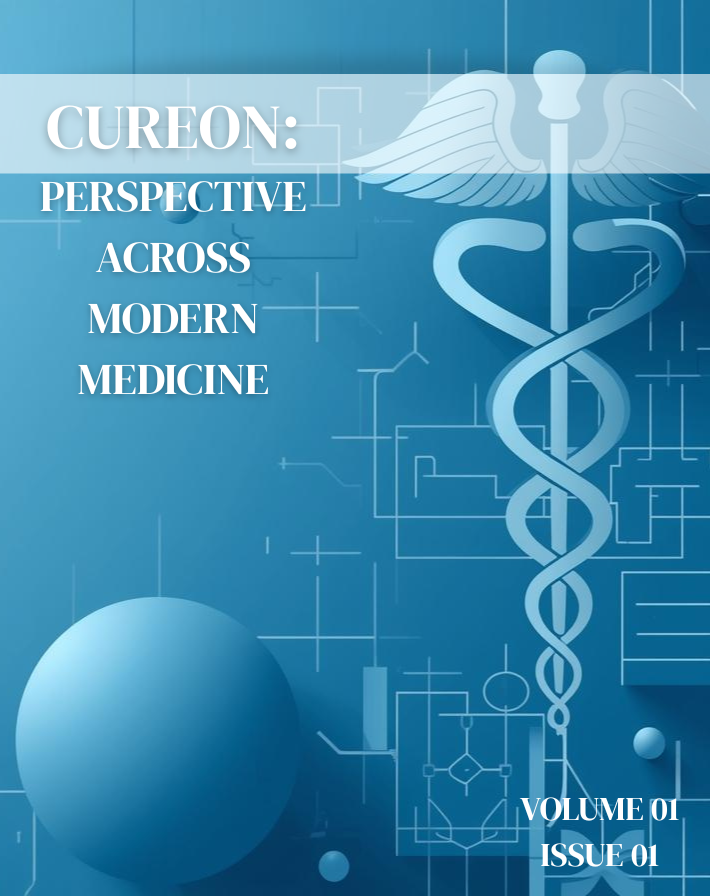Administration Technique of Eye Medications and Disposal Practices Among Patients in Karachi: A cross-sectional Analytical Study
Keywords:
Medication, Administration technique, pharmacology, disposal techniques, patient educationAbstract
Objective:
This study aimed to assess the administration technique of eye medications and disposal practices among ophthalmic patients in Karachi, also to identify determinants associated with correct usage.
Methods:
An analytical cross-sectional study was conducted between May and July 2025 at the Department of Ophthalmology and Visual Sciences, SMBBIT, and a private eye clinic in Karachi. A convenience sample of adult patients (≥18 years) using ophthalmic medications for at least one week was enrolled. Data were collected using an interview-based questionnaire and direct observation of instillation technique. Descriptive statistics summarized demographic and clinical variables, while t-tests and logistic regression identified determinants of correct technique.
Result:
A total of 354 patients were taken of age 53.8 ± 17.4; 54.8% were female. Only 21.4% performed hand hygiene before instillation, 71.5% instilled a single drop, and 18.6% practiced nasolacrimal occlusion. The mean technique score was 4.0/7. Female sex, literacy, prior ocular surgery, and receiving professional instruction were significantly associated with higher technique scores (p<0.05). Disposal practices were suboptimal: 76.1% discarded drops in household garbage, while <5% returned them to pharmacies.
Conclusion:
Patients in Karachi demonstrated suboptimal administration, unsafe disposal of ophthalmic medications,structured education and improved disposal guidance are urgently required to enhance therapeutic outcomes and reduce environmental risks.
Downloads
References
1. Mehuys E, Delaey C, Christiaens T, et al. Eye drop technique and patient-reported problems in a real-world population of eye drop users. Eye (Lond). 2019;33(8):1392–8.
2. Flach AJ. The importance of eyelid closure and nasolacrimal occlusion following the ocular instillation of topical glaucoma medications. J Ocul Pharmacol Ther. 2008;24(6):601–3.
3. Kaila T, Huupponen R, Salminen L. Effects of eyelid closure and nasolacrimal duct occlusion on systemic absorption of ocular timolol. J Ocul Pharmacol. 1986;2(4):365–9.
4. Mehuys E, et al. Nasolacrimal occlusion reduced systemic absorption of timolol by ~60%. Eye (Lond). 2019;33(8):1392–8.
5. Hennessy AL, Katz J, Covert D, et al. Videographic assessment of eye-drop instillation in glaucoma patients. Ophthalmology. 2010;117(12):2345–52.
6. Chan EH, Tang FY, Tham CC, et al. Educational interventions improve eye drop instillation technique in elderly. Clin Ophthalmol. 2014;8:1639–46.
7. Davis SA, Carpenter DM, Blalock SJ, et al. Online educational video improves glaucoma eye drop technique. Patient Educ Couns. 2019;102(5):937–43.
8. Shoaib M, Raziq A, Iqbal Q, et al. Disposal practices of unused and expired pharmaceuticals in Quetta, Pakistan. PLoS One. 2022;17(5):e0268200.
9. Teklehaimanot B, Teweldemedhin M, Abdu N, et al. Eye medication technique, determinants and disposal practices in Eritrea. BMJ Open. 2024;14:e084168.
10. Tesfaye BT, Alemu AM, Tegegn HG. Eye drop administration techniques in Ethiopia. Patient Prefer Adherence. 2021;15:1419–27.
11. Al-Omar RS, Al-Aqeel SA, Al-Dossari DS, et al. Medication use and disposal in Saudi Arabia. Saudi Pharm J. 2020;28(9):1161–9.
12. U.S. EPA. How pharmaceuticals enter the environment. Washington DC: EPA; 2024.
13. Alghadeer S, Al-Arifi MN. Pharmaceutical disposal knowledge among community pharmacists in Saudi Arabia. Saudi Pharm J. 2021;29(1):30–6.
14. Davis SA, et al. Contact with bottle tip reported by 26% of participants in glaucoma drop technique study. Patient Educ Couns. 2019;102(5):937–43.
15. Zhou X, et al. PPCPs in aquatic ecosystems: persistence and bioaccumulation. Environ Sci Technol. 2010;44(12):420–5.
16. Rogowska J, Zimmermann A, Muszyńska A, et al. Household pharmaceutical waste disposal review. Int J Environ Res Public Health. 2022;19(23):15798.
17. Biran A. Barriers to glaucoma treatment adherence and role of assistive devices. Glaucoma Res Clin Pract. 2023;3(3):65.
18. Saif M. Evaluation and education to improve eye-drop technique in Lahore patients. Pak J Ophthalmol. 2024;40(2):112–7.
19. U.S. Geological Survey. Pharmaceuticals in water. USGS; 2024.
20. Daniels Health Knowledge Center. Consequences of improperly disposed pharmaceuticals. 2022.
21. Tan J, et al. Disposal of unused eye drops: 72% medication volume remained in bottles in U.S. eye clinics. AAO News. 2024.
22. Nham AK, et al. Compliance with postoperative eye drops in rural Ghanaian cataract patients. Afr J Ophthalmol. 2025;8(1):15–21.
23. EyeWiki. Environmental sustainability of dry eye disease. EyeWiki; 2024.
24. Kümmerer K. Pharmaceuticals in the environment—a review. Annu Rev Environ Resour. 2010;35:57–75.
25. Larsson DGJ. Pollution from drug manufacturing: a review. Philos Trans R Soc B Biol Sci. 2014;369(1656):20130571.
Additional Files
Published
Issue
Section
License
Copyright (c) 2025 Cureon: Perspective Across Modern Medicine

This work is licensed under a Creative Commons Attribution 4.0 International License.



